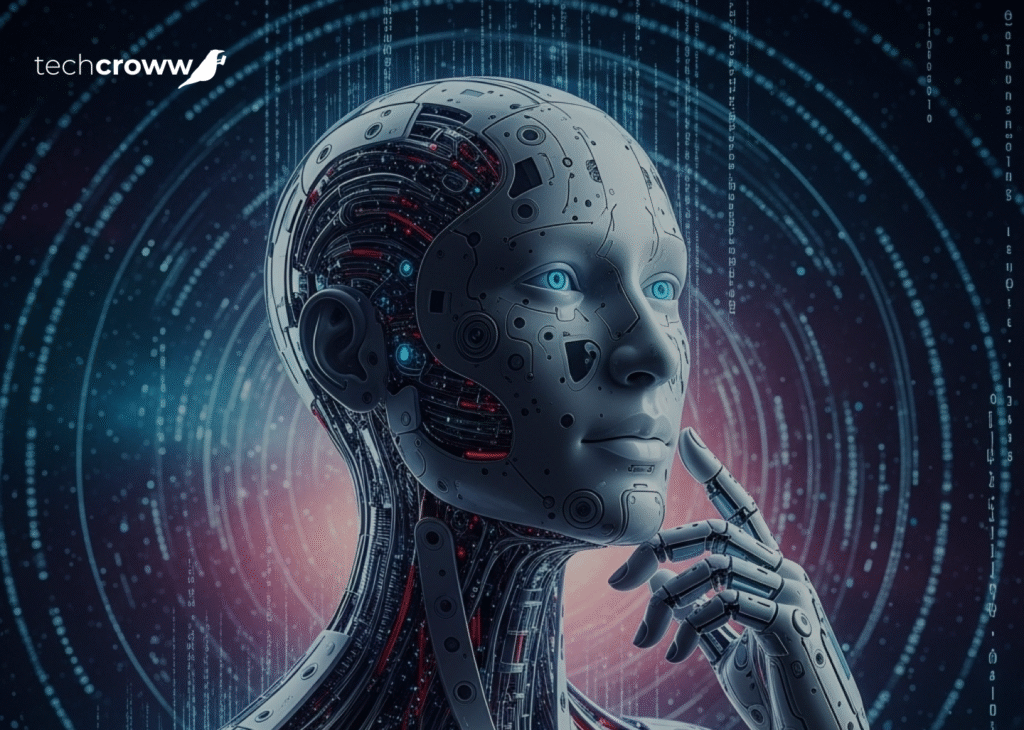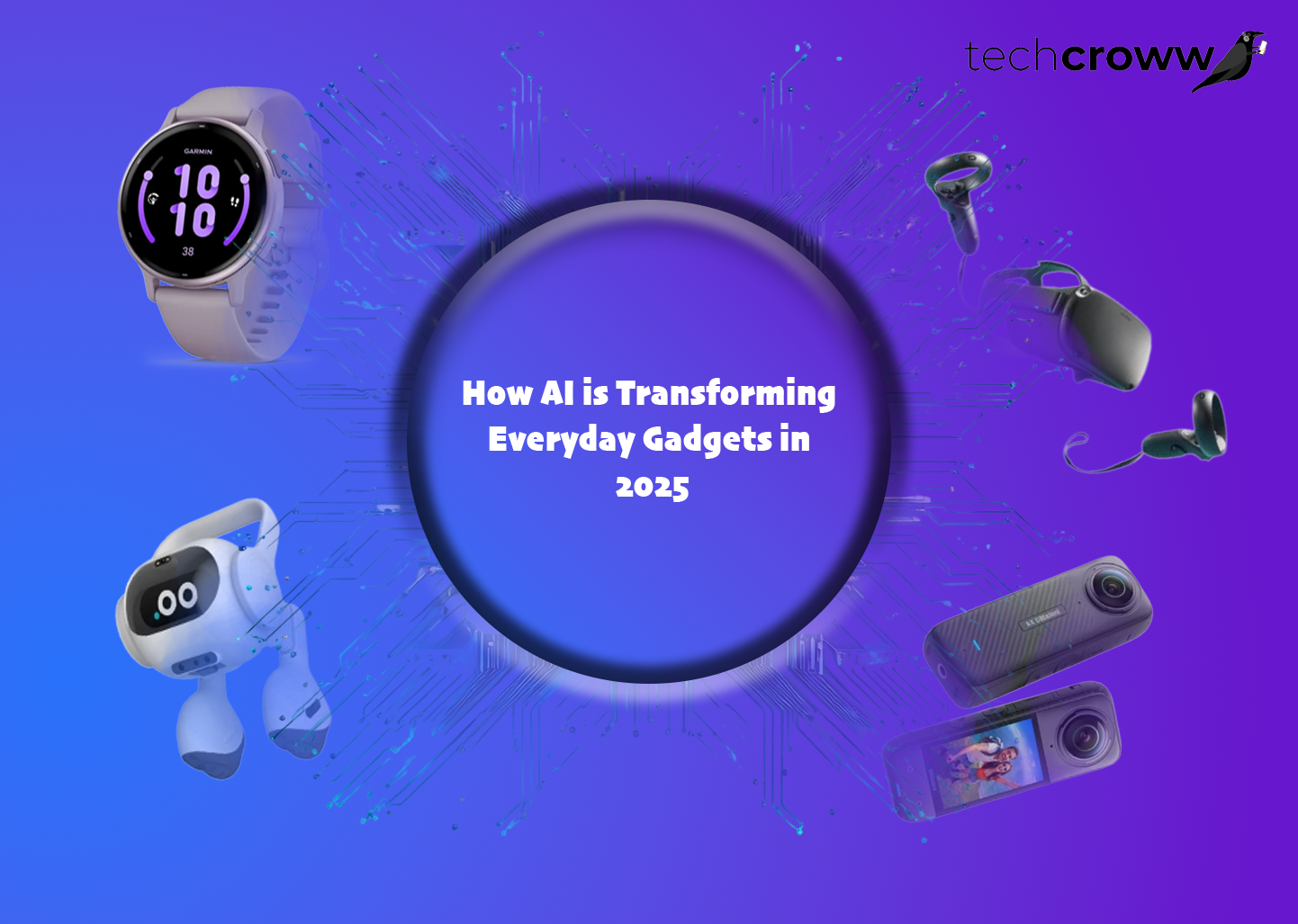Artificial Intelligence (AI) is no longer a futuristic concept—it’s already integrated into the gadgets we use daily. From voice assistants that understand our needs to smartwatches that track our health in real-time, AI is quietly revolutionizing how we live, work, and interact with technology.
In this blog, we explore how AI is transforming everyday gadgets in 2025, enhancing convenience, personalization, and performance like never before.
1. Smartphones: Smarter Than Ever
Today’s smartphones are more than just communication devices—they are intelligent personal assistants.
AI Feature | Impact on Smartphones |
AI Cameras | Detect scenes, adjust lighting, remove blur, optimize portraits |
Voice Assistants | Google Assistant, Siri, and Alexa handle daily tasks via voice |
Predictive Typing | AI-based keyboard suggestions learn your writing style |
Call Screening | Identify spam and transcribe voicemails in real-time |
These features improve user experience by learning your habits and delivering smarter functionality over time.
2. Smart Home Devices: AI-Powered Convenience

From turning off lights to securing your home, AI is central to modern smart homes.
Gadget | How AI Enhances It |
Smart Speakers (Echo, Nest) | Understand commands, personalize music, answer questions |
Smart Thermostats (Nest, Ecobee) | Learn preferences, adjust climate for energy efficiency |
AI Security Cameras | Recognize faces, detect unusual activity, send alerts |
Smart Appliances | Fridges track inventory, ovens adjust cooking time via AI |
AI learns from user behavior to automate tasks, save energy, and enhance safety.
3. Wearables: Personalized Health Monitoring
Fitness trackers and smartwatches in 2025 do much more than count steps—they act as personal health advisors.
Wearable Feature | AI Application |
Heart Rate Monitoring | Detects irregular heart rhythms using AI models |
Sleep Tracking | Analyzes patterns, suggests improvements |
Workout Recommendations | Custom fitness plans based on real-time data |
Stress Detection | Uses biometrics and behavior patterns to manage mental health |
With AI, wearables go from being passive data collectors to proactive wellness tools.
4. Laptops and Tablets: Smarter Productivity
Modern laptops and tablets now include AI tools that boost productivity and ease of use.
AI Integration | Benefit |
AI Copilots (like Microsoft Copilot) | Summarize documents, draft emails, create presentations |
Noise Cancellation | Filters background noise in video calls |
Battery Optimization | Learns usage and adjusts performance for longer life |
Facial Recognition | Provides secure, instant logins |
AI allows devices to predict user intent, automate routine work, and increase efficiency.
5. AI in Cars: Smarter Mobility
AI is at the heart of the modern driving experience, from infotainment to autonomous navigation.
AI Feature | Role in Vehicles |
Driver Assistance | Lane-keeping, adaptive cruise control |
Voice Commands | Control music, climate, navigation without distraction |
Predictive Maintenance | Warns about potential issues before breakdowns |
Navigation Algorithms | Suggests fastest routes based on real-time data |
Cars in 2025 are becoming safer and more intuitive, thanks to AI integration.
6. AI-Powered TVs and Entertainment Devices
AI is also reshaping entertainment by learning what you love and offering personalized experiences.
AI Feature | Application in Entertainment |
Content Recommendations | Suggest shows/movies based on past viewing habits |
Voice-Controlled Remotes | Change channels or search content hands-free |
Upscaling Technology | AI enhances video resolution for older content |
Audio Calibration | Adjusts sound output for room size and acoustics |
AI ensures your time spent on entertainment is more immersive and tailored.
7. AI in Everyday Utilities: From Toothbrushes to Refrigerators
Even the smallest home devices are becoming AI-smart.
Gadget | How AI Is Used |
Smart Toothbrushes | Guide brushing habits, track coverage, offer dental insights |
Robot Vacuums (Roomba) | Map rooms, learn layouts, avoid obstacles |
Smart Fridges | Suggest recipes, auto-order groceries |
Smart Lights | Adjust brightness and color based on mood and time |
These innovations showcase how deeply AI is integrated into the fabric of daily life.
The Future: Where AI Is Taking Us Next
As we move further into 2025, AI will make gadgets even more predictive, autonomous, and human-like. We’re seeing the rise of ambient computing—where devices understand context without direct commands—and edge AI, where processing happens directly on the gadget, reducing latency and improving privacy.
Expect your gadgets to not just respond to you, but anticipate your needs before you even say a word.
Conclusion: The AI Lifestyle is Here
AI is no longer a premium feature—it’s a core part of every major consumer device in 2025. Whether you’re adjusting your thermostat, getting health tips from your smartwatch, or navigating your morning commute, AI is working behind the scenes to make life easier, faster, and more personalized.
For consumers, this means smarter decisions, better experiences, and a more connected lifestyle. And this is just the beginning—AI is set to transform not only our gadgets but our entire relationship with technology in the years ahead.


